2016 September Monthly Report
Highlights
September 1st saw frost warnings issued for areas of the Southcentral. Then on the 2nd smokejumpers were sent to fight a wildfire near Koyuk. Snowfall in the Eastern Brooks Range on the 7th caused very difficult driving conditions along the Dalton Highway. Widespread frost warnings for the next day were issued for the Fairbanks area on the 7th. The Fairbanks Airport reported a low of 30°F on the 8th, resulting in a growing season of 125 days long for Fairbanks for 2016. Frost was reported across the Fairbanks North Star Borough, and widespread frost warnings were again issued for the 9th. More snow was reported in the Brooks Range during the weekend of the 9th due to a second cold front moving down out of the Arctic. At the same time the remnants of hurricane Lester impacted the Panhandle area with heavy rains and high winds forecasted for the Central Panhandle. Sitka reported wind speeds up to 40 mph. Cape Spence reported 62 mph, while 61 mph was reported from Cape Decision.
On the 10th, high wind warnings were issued for South Central and Interior areas for the weekend of the 10th up to Monday the 12th for gusts up to 70 mph in passes and up to 85 mph along the Turnagain Aram area due to a low-pressure system moving east from the Aleutian area. A gust of 81 mph was reported on the hillside in Anchorage on the 11th. Minor property damage was reported out to Palmer. A gust of 75 mph was reported southeast of Fairbanks on the 12th. Power outages affected thousands in the Anchorage area. Seward received more than 4.6" of rain during the storm, and the flood advisories were issued for the Seward River, while some water was reported on the airport runway. The storm moved east to Southeastern areas on the 12th with gusts up t 67 mph reported at Cape Spencer, 62 mph at Skagway Airport, and 45 at downtown Juneau. Also on the 12th storm warnings were issued for the North Slope and high winds warning and snow for the Brooks Range. Hazardous driving conditions were reported along the Dalton Highway on the 15th.
A mudslide temporarily covered the tracks of the Alaska Railroad on the 14th. The mudslide came down when a fright train was passing, but did not damage the train or the tracks. Snow up to 2" was forecast on the Denali Park road on the 17th.
A new round of high wind warnings were issued for Southcentral and Interior areas on the 19th for another Bering Sea storm moving east on the 20th and 21st with gusts possibly up to 100 mph along Turnagain Arm. Gusts over 80 mph were reported at Delta Junction on the 21st. The Anchorage hillside reported gusts up to 82 mph, while Upper DeArmoun Road reported a gust at 103 mph, and Fairweather Grounds buoy reported sustain gust over 45 mph. Power outages extended from Kasilof to Anchorage to Fairbanks to Delta Junction. Minor property damage was reported. A few cargo planes were diverted from Anchorage to Fairbanks, while water again moved over the Seward Airport runway. High wind warnings continued in the area on the next day. The storm also generated more than 100 lightning strikes in a couple hours in the northern gull coast on the 23rd.
Difficult driving's conditions due to blowing snow impacted motorists on the Steese Highway on the 23rd. On the 26th the first snow was reported in Delta Junction. The next day the first snow hit the Fairbanks area. As the month closed out, hazardous driving conditions were reported along the Dalton Highway, while a new low-pressure system in the Bering Sea resulted in high winds reported in the area. Gusts up to 78 mph were recorded at Cape Newenham, 71 mph at Cold Bay, 67 mph at King Coe and 69 mph at Akun Airport.


